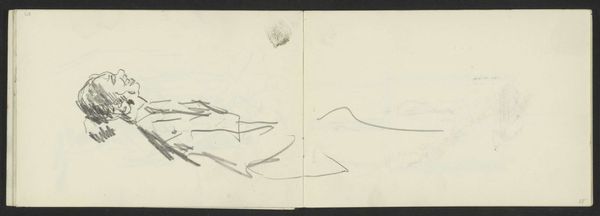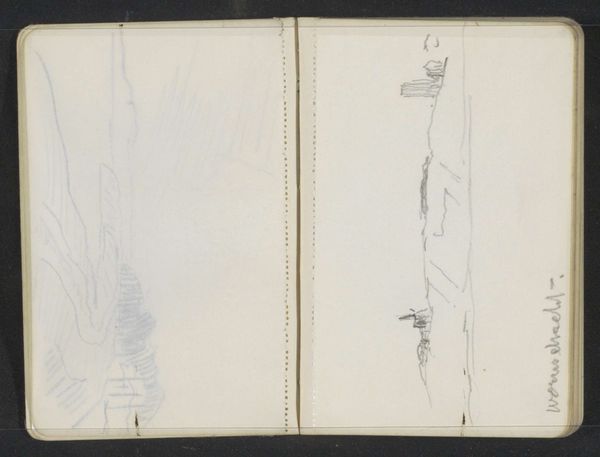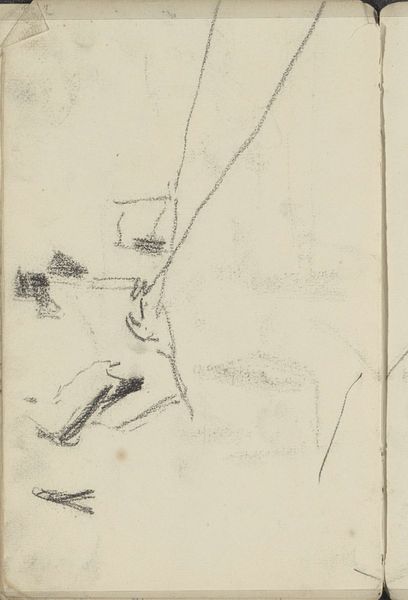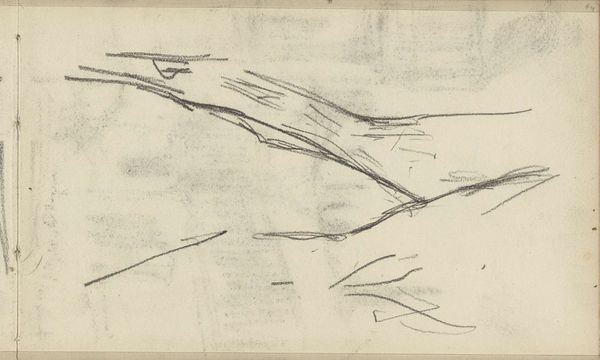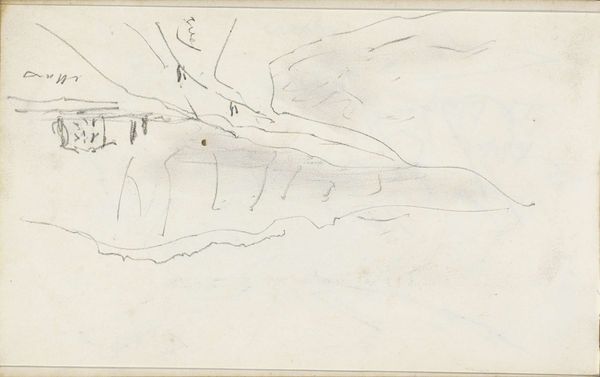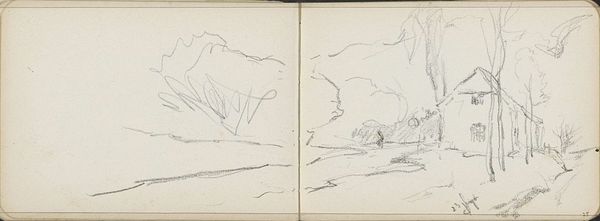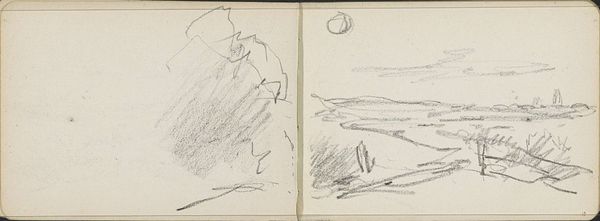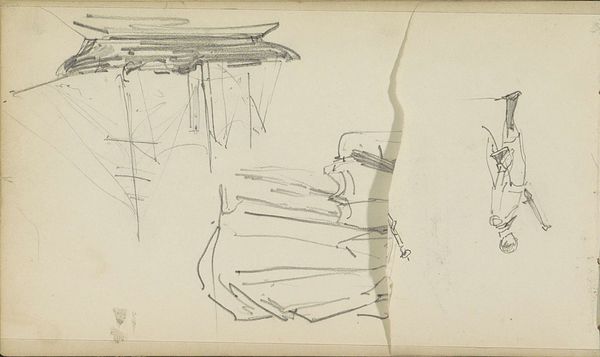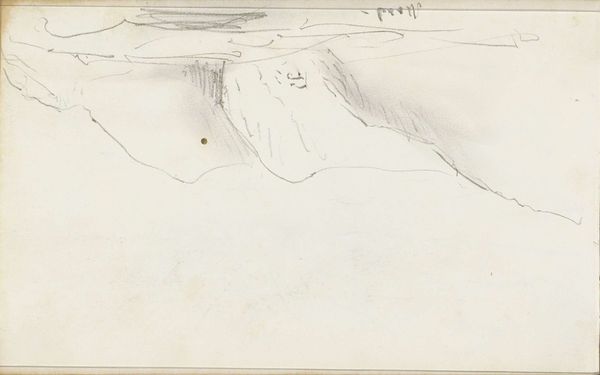
drawing, pencil
#
drawing
#
light pencil work
#
pen sketch
#
landscape
#
personal sketchbook
#
road
#
idea generation sketch
#
ink drawing experimentation
#
pen-ink sketch
#
pencil
#
abstraction
#
pen work
#
sketchbook drawing
#
sketchbook art
#
initial sketch
Copyright: Rijks Museum: Open Domain
Curator: This is "Paardenkar op een pad en een hut," which roughly translates to "Horse cart on a path and a hut," by Willem Cornelis Rip. It's likely from between 1866 and 1922, and we see it rendered in pencil. Editor: Immediately, I am struck by how skeletal it feels. Both the horse cart and the hut on the right side feel fragile, almost ghost-like, as though they're fading from memory. Curator: I see what you mean. Perhaps Rip was trying to capture the fleeting nature of a memory, like a quick sketch to hold onto something before it disappears. A path and a humble hut represent so many people’s homeplace, and horses are symbols of travel but also agricultural labor and the common life. Editor: Right. The image seems to grapple with labor, class, and landscape. Carts were essential for moving goods but were also indicative of a rural lifestyle in tension with burgeoning urban spaces. It evokes a time of significant social and economic transition. Curator: And you're speaking about it being drawn, there's a feeling of impermanence because it is simply rendered in pencil, like something quick in a sketchbook— it captures that moment and preserves that type of symbolic cultural representation as a result. The choice of subject – a simple cart, a humble dwelling—resonates, particularly because of how they function symbolically in a visual shorthand, to use your phrasing. Editor: Indeed. This work highlights the transient nature of existence for marginalized groups in society as the world began shifting with more industrialized technology. What once felt like a given became ephemeral, and maybe, here, even traumatic. What stories do we lose when a way of life vanishes, and is memorialized with humble graphite and paper? Curator: Well, seeing these symbols, the home, the journey… it evokes the universal need for security, movement and purpose— elements that remain poignant across temporal shifts. The simple style draws our attention to the fact that at their core these symbols are what constitute society, but it may just take some art and insight to expose them as much. Editor: Exactly. I see it as a powerful reminder of the everyday realities that often get overlooked. We must stay grounded and never lose our human roots in even the smallest of gestures of representation.
Comments
No comments
Be the first to comment and join the conversation on the ultimate creative platform.
